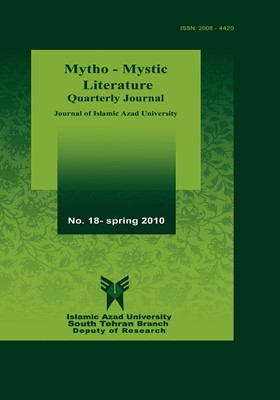-
-
List of Articles
-
Open Access Article
1 - The Performance of Myth in Modern life: The Archetypes of "Mountain-Cave" and "Circle"
بهروز اَتونی -
Open Access Article
2 - The Language of Symbols in The Alchemist and Islamic Mysticism: A Comparative Study
حافظ حاتمی محمدرضا نصر اصفهانی -
Open Access Article
3 - The Role of Ashī in Ancient Iran
نغمه حسینی -
Open Access Article
4 - Rābiah and Metaphor
قدمعلی سراّمی مهری تلخابی -
Open Access Article
5 - Aesthetics of Golshan-e Rāz
تورج عقدایی -
Open Access Article
6 - The Style of Epic Poetry in Shāhnāmeh and Iliad: A Comparative Study
حسینعلی قبادی سعید بزرگ بیگدلی حجت عباسی -
Open Access Article
7 - The Sanctity of Metal in Iranian Mythology and Religious Texts
ناصر نیکوبخت هیبتاالله اکبری گندمانی علیرضا محمدی کلهسر
-
The rights to this website are owned by the Raimag Press Management System.
Copyright © 2021-2025







